This story was written by Nell Minow for CBS news.
Everyone knows how to read an annual report. You skip the glossy pages with the pictures of smiling, diverse employees on the job and contributing to the community and the soporific prose about why any good news is attributable to the top executives (though “our greatest resource is our people”) and any bad news is attributable to outside forces. Experienced readers flip right to the rows of numbers in the back, starting with the footnotes first.
But Sheboygan, Wisconsin insurance company ACUITY has mastered the art (literally) with a series of award-winning annual reports that reward careful attention and deliver a compelling message about the company’s capability, credibility, and, yes, for those of you who consider the Midwest flyover country, an ability to dazzle that outdoes anything from New York or Los Angeles. For an insurance company, that is.
ACUITY works with Sheboygan-based advertising company Dufour Advertising to make sure the medium conveys the message. Formerly known as Heritage Insurance, ACUITY changed its name ten years ago to distinguish itself from other insurance companies with similar names, emphasize its expert focus on customers, and convey a more forward-looking direction. Previous annual reports were styled after the Guinness Book of World Records (showing ACUITY’s record-breaking performance) and a pizza delivery box (they deliver). But this year’s is in a class by itself.
The pop-up, nursery-rhyme annual report
“Our Storybook Year” is inspired by a child’s book of nursery rhymes, with intricate pop-ups on each page. It is a stunning work of art, illustrated by Aaron Boyd, with paper engineering by Andrew Baron of Popyrus Studios. Wally Waldhart, ACUITY’s Vice President for Sales and Communications, says, “ACUITY’s Storybook Year creates a huge ‘wow’ factor, and any time you can draw an audience in, you leave a lasting and positive impression about your company. This will live on and be passed from person to person – it will be a constant reminder that ACUITY stands out from the crowd.”
Dufour’s Drew Foerster said, “In creating its 2010 Annual Report, ACUITYlooked to build on its reputation for delivering a product that consistently defies the stoic conventions of the insurance industry. The objective was not simply to present the company’s financial results, but to entertain customers and inspire prospects to do business with ACUITY. The insurer had a vision to create something that would stand out–and stand up.”
Here’s what we can learn from “Our Storybook Year”:
- The Format Has to Serve the Message. The direction to the artists was very clear. Every element of the design had to tell the story. ACUITY wanted it to be “warm, accessible, and inviting” to underscore the nature of the brand and convey the message about its performance over the past year. “Our Storybook Year” conveys a “happily ever after” sense of good outcomes, fitting for a company with its 11th straight year as a top performer in its benchmark group and 6 consecutive “best to work for” awards. It brings a sense of tradition and a sense of re-invention and willingness to buck the trends. Baron pointed out that the theme continues on every page of the book with nursery rhyme-inspired sections that provide instant recognition, an inviting traditional appearance, and “metaphors galore.” When Humpty Dumpty falls, it’s the insurance company that picks up the pieces. And, like Mary, ACUITY knows how to make its garden grow.
- Scheherazade knew what she was talking about. Every single second, you are competing with the entire world for the attention of your audience. ACUITY put a lot of intriguing detail onto every page to draw its readers in, understanding that every additional moment of attention was an opportunity to strengthen the relationship and underscore its brand. While its competitors’ annual reports are clogging up landfills, this one will be taken off the shelf to be read and shared again and again. The images are inspired by nursery rhymes, but there are many clever touches for grown-ups who look closely, from a tiny replica of the S.S. Minnow to a set of dice that spell out Jenny’s phone number, 867-5309.
- Globalism is a double-edged sword. Pop-up books are among the last of the mass-produced consumer goods that must still be hand-made. Every flap and tab is individually inserted. The book was produced by Toppan Excel in China, through a process so precise that the properties of the glue were adjusted each day depending on the level of humidity in the air. But an earthquake in Chile led to a spike in paper prices that required some last-minute changes to the book, including cutting back on some of the effects, to maintain the price point.
- Quality control is key. If the message is reliability, the annual report has to deliver perfection. ACUITY had to have a zero tolerance for errors on this very complicated, hand-made item. Every book was triple-checked in China and then checked again when it arrived in Wisconsin.
- Know your audience. For a public company, a book like this might seem over-the-top. But ACUITY is a mutual. Its owners are its customers and employees and so it has a unity of interest and focus. That is a luxury companies that go to the public markets for capital cannot afford. ACUITY has made the annual reveal into a major event for the staff of around 600, who this year each received a box of Girl Scout cookies and some coupons for local businesses along with their copies of Our Storybook Year. In addition to its message of good performance for its customers, the book delivered a strong statement of appreciation to the people who made it happen. And that’s what I call living happily ever after.
